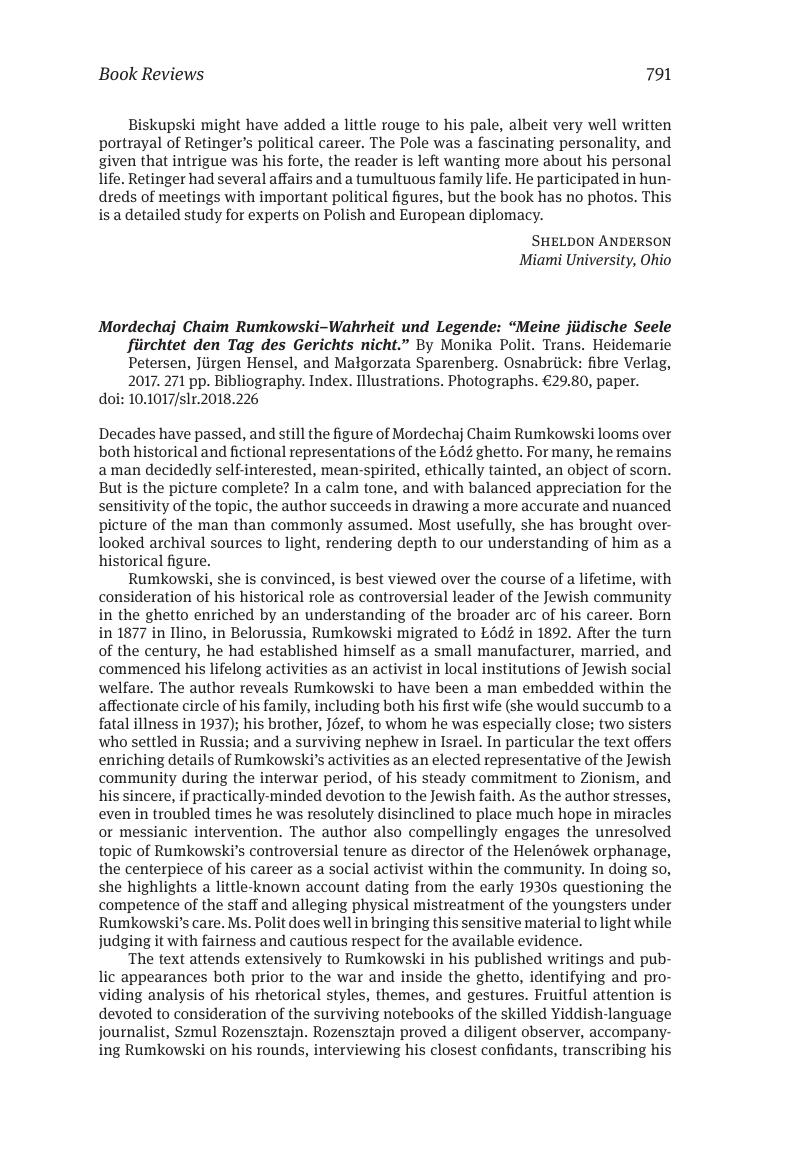No CrossRef data available.
Article contents
Mordechaj Chaim Rumkowski–Wahrheit und Legende: “Meine jüdische Seele fürchtet den Tag des Gerichts nicht.” By Monika Polit. Trans. Heidemarie Petersen, Jürgen Hensel, and Małgorzata Sparenberg. Osnabrück: fibre Verlag, 2017. 271 pp. Bibliography. Index. Illustrations. Photographs. €29.80, paper.
Review products
Mordechaj Chaim Rumkowski–Wahrheit und Legende: “Meine jüdische Seele fürchtet den Tag des Gerichts nicht.” By Monika Polit. Trans. Heidemarie Petersen, Jürgen Hensel, and Małgorzata Sparenberg. Osnabrück: fibre Verlag, 2017. 271 pp. Bibliography. Index. Illustrations. Photographs. €29.80, paper.
Published online by Cambridge University Press: 25 October 2018
Abstract
An abstract is not available for this content so a preview has been provided. Please use the Get access link above for information on how to access this content.

- Type
- Book Reviews
- Information
- Copyright
- Copyright © Association for Slavic, East European, and Eurasian Studies 2018


